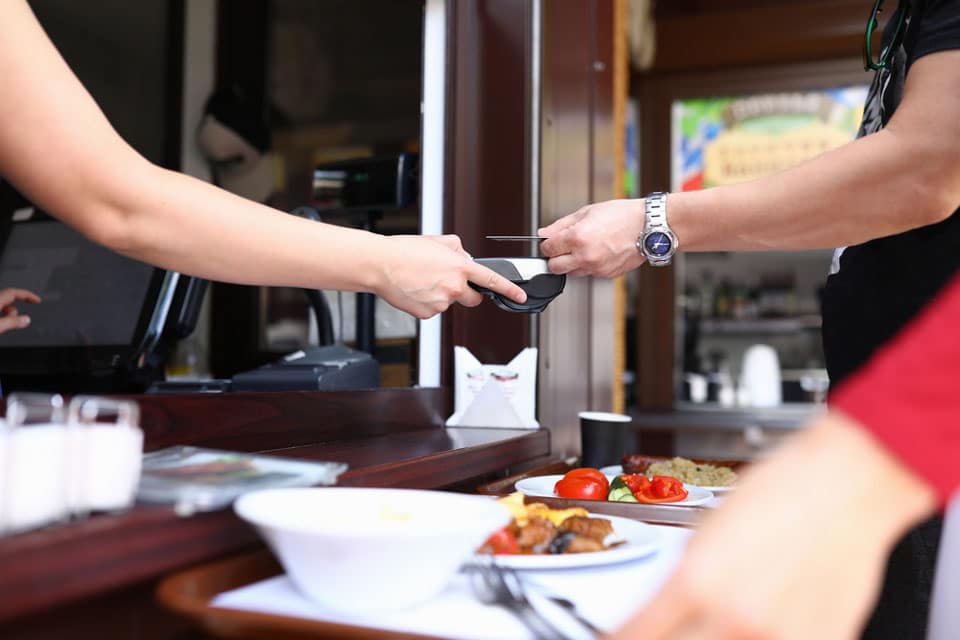The Impact of Technology on Restaurant Operations: How Can It Help CEOs Transform the Industry?

Technology is one of the most vital forces behind the transformation of various industries, including restaurants. It can help streamline processes to improve customer experiences. It also helps restaurant owners gather insights into their operations, influencing better decisions about their business.
Aside from these benefits, technology has also made service delivery faster and more efficient. However, just like in any industry or discipline, there are limitations. The challenge is for business leaders to overcome these limitations, maximize technology’s benefits, and transform the industry.
A Look Into the Restaurant Industry
In 2021, the restaurant industry boasted a global market size of $2,323.29 billion. By 2022, it had surged to $2540.05 billion, marking a significant expansion. Projections suggest that this growth trend will persist, with the industry expected to grow at an annual rate of 10.76% until 2029.
With such colossal compound annual growth, the industry is poised for substantial expansion, reaching an estimated value of $5,194.60 billion by 2029 as it adapts to evolving customer expectations.
Challenges of the Restaurant Industry
As restaurants embrace digital technologies, they encounter similar challenges to those faced by large businesses when they first relied on technology.
One major challenge is the need to integrate various solutions. Restaurant technology firm Curbit is addressing this challenge with its dynamic order throttling tools powered by artificial intelligence.
For example, popular fast food restaurant, Smashburger, identified four main challenges affecting digital operations and the guest experience:
- Lack of consistent speed-of-service data across the brand.
- Guests are often provided with inaccurate estimated wait times.
- No real-time updates regarding the progress of their orders are available to customers.
- Absence of order throttling during busy peak hours.
With Curbit’s advanced real-time AI platform, Smashburger successfully tackled its operational challenges and greatly enhanced the guest experience.
Within just 90 days, the locations using Curbit experienced notable improvements. They conducted A/B testing on a cohort of 31 stores that activated Curbit. They compared the results to 30 stores functioning as the control group.
Restaurant owners can learn from Smashburger and leverage technology to address their pain points and streamline their operations.
How can industry leaders improve restaurant businesses?
The straightforward answer to this question is this: business leaders should leverage technology to improve how they deliver their products and services.
They should keep themselves updated on the latest trends and breakthroughs. Aside from that, they should also be proactively looking for ways to apply these technologies to their operations.
If you’re looking for business technology insights, consider the following:
Use purpose-built tools
In the restaurant industry, franchises are common, making it hard to keep things consistent. An excellent solution to this concern is giving franchise owners special tools and technology tailored to their needs. This can make the experience more consistent and improve the brand’s overall performance.
Another challenge comes from the different ways people can order food. With many options, like ordering directly or using services like GrubHub, UberEats, and DoorDash, restaurants need help managing these systems while still giving customers the same experience. You can use artificial intelligence (AI) to handle these systems and keep the brand strong.
There are many differences between restaurants, locations, brands, and people. Among these factors, people are always the toughest to tackle in digital change. You can provide clear information about what’s happening in the kitchen and data to fix any issues. Although only a few restaurant orders come from third-party delivery services, it’s still essential.
A study by PYMNTS Intelligence with PayPal found that one out of four people in the U.S. only order food online. Another 36% of customers use traditional ways (like going in person or calling) and online methods to order food.
Tools like AI-assisted ordering systems can help enhance omnichannel performance. One of the most significant features of innovative ordering systems is their self-service interface. They utilize touchscreens or speech recognition technology, allowing customers to place orders without interacting with the staff.
During busy times, servers can be overwhelmed, increasing the likelihood of miscommunication or errors. Integrating automated food ordering systems minimizes the risk of such mistakes.
Invest in POS
Running a restaurant well is essential. You need to check on your employees, make sure customers are happy, and keep an eye on your stock to make a profit. But doing all these things can be challenging.
Restaurant POS systems can simplify tasks like handling sales, staying organized, and tracking critical information. These pieces of information include customer preferences and staff schedules.
If you love updating your menu with unique dishes and seasonal delicacies, a bespoke POS system can significantly help. With many modern systems, you can manage your menu from a remote computer.
This means you can update your menu without leaving your office, making synchronizing changes across all terminals and locations easy.
For restaurant owners, keeping inventory track is crucial to consistently offering their menu. Advanced restaurant POS systems make this easy by allowing you to track menu items, ingredients, and other kitchen supplies.
You can monitor inventory levels and generate reports to help you order just the right amount of ingredients. This saves you money, lets you serve your full menu to customers, and guarantees that your food is always fresh.
If you’re running a takeout food service with an online ordering platform, it must work with your current POS system. Most restaurant POS systems offer integration with external ordering platforms.
This means that you can automate tasks like accepting payments and starting the preparation for online orders, making the process much smoother.
Utilize Amazon Web Services (AWS)
The shift toward focusing solely on off-premise business prompted restaurant operators to implement new strategies and streamline their processes.
Some of these strategies included setting aside parts of their parking lots for curbside pickup, partnering with third-party delivery services, and simplifying menus to feature only items that travel well.
In addition to these physical changes, many operators have embraced technological and digital advancements to navigate challenging circumstances.
They utilized data to anticipate busy and slow periods, promoted their offerings creatively to stimulate demand, managed third-party orders efficiently, and enhanced the drive-thru experience.
Taco Bell promptly adjusted its strategy when the pandemic caused a shift in consumer demand toward delivery. Leveraging AWS, they seamlessly integrated their mobile and online ordering apps with major third-party delivery providers.
Through AWS, Taco Bell efficiently distributed menu updates, promotions, and other information across all platforms offering its food. This swift integration with delivery services enabled them to boost revenue when indoor dining was restricted.
These actions favor Taco Bell for the post-pandemic era, where they anticipate that half of their orders will come from digital channels.
Business Leaders Must Be the Catalyst of Change
The leader must be the change they want in business and the industry. If they wish for their restaurant business to grow, they must be ready to explore uncharted territories to find valuable innovations. They must also be willing to take risks to achieve a better outcome.
Lastly, they must also be wise in deciphering which path to take and which to give up. They must be willing to do this much because they hold the key to their success and the job security of the people relying on them.
Have you read?
Rebranding Countries: 17 Names That Redefined The Nation’s Identity.
These Are The Largest Warships In The World.
Ranked: Most Powerful Weapons in the World, 2023.
Ranked: Countries with the largest active combat helicopter fleet worldwide in 2023.
Ranked: Most powerful air forces in the World, 2023.
Report: Strongest Economies in The World in 2023.
Add CEOWORLD magazine to your Google News feed.
Follow CEOWORLD magazine headlines on: Google News, LinkedIn, Twitter, and Facebook.
This report/news/ranking/statistics has been prepared only for general guidance on matters of interest and does not constitute professional advice. You should not act upon the information contained in this publication without obtaining specific professional advice. No representation or warranty (express or implied) is given as to the accuracy or completeness of the information contained in this publication, and, to the extent permitted by law, CEOWORLD magazine does not accept or assume any liability, responsibility or duty of care for any consequences of you or anyone else acting, or refraining to act, in reliance on the information contained in this publication or for any decision based on it.
Copyright 2024 The CEOWORLD magazine. All rights reserved. This material (and any extract from it) must not be copied, redistributed or placed on any website, without CEOWORLD magazine' prior written consent. For media queries, please contact: info@ceoworld.biz
SUBSCRIBE NEWSLETTER











